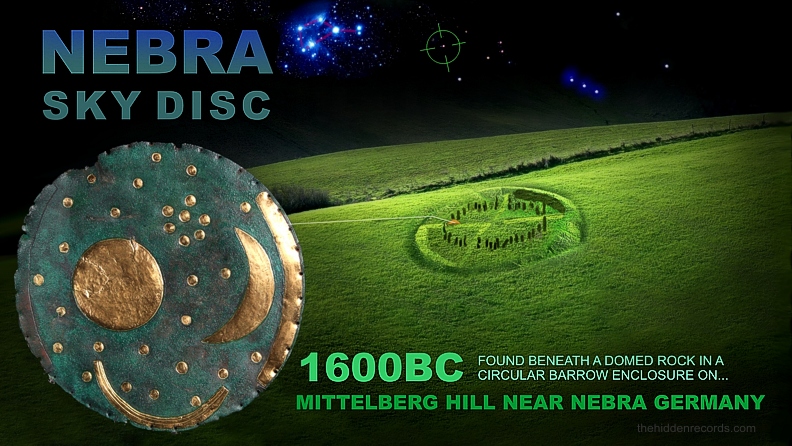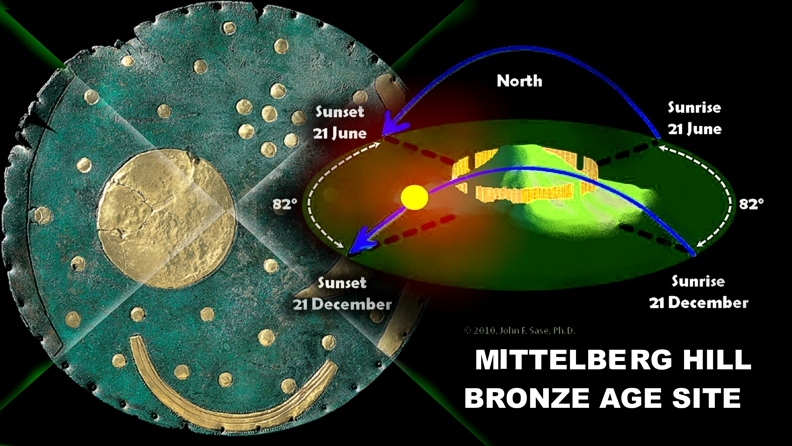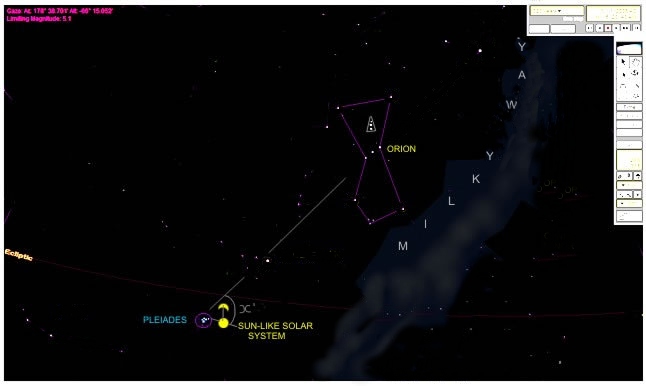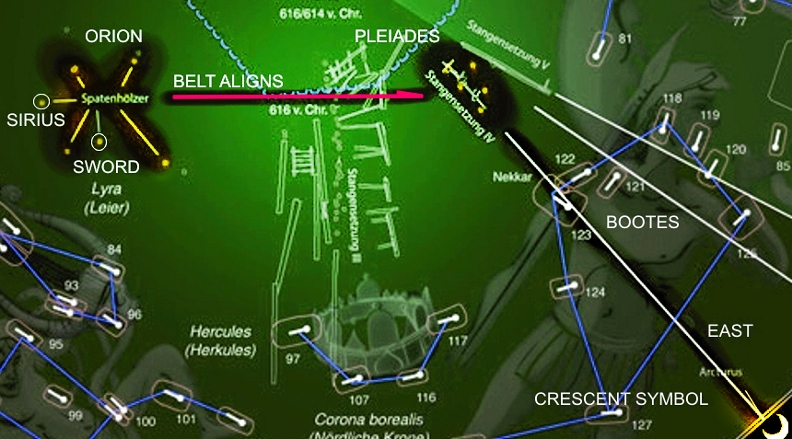Ever since its discovery atop a hill in Germany in
1999, a Celtic bronze and gold artefact dubbed the 'Nebra disc',
has baffled both archaeologists and historians alike as to its deepest celestial secrets.
ref
Despite numerous debates, this Bronze Age relic still has historians arguing over the emotional inspiration and reason why it became a piece that appears to have been worn by someone. Was it worn in some sort of ritual or ceremony is the question. The general
consensus is that it is representative of important stars, although
opinions differ vastly as to which stars are purportedly shown,
except for a cluster of 'dots' that all seem to be
in agreement with.
The cluster conclusively represents the Pleiades. Here is a close up image taken just after it was restored and gold polished
ref
One of the more recent opinions expressed by an archaeologist
in an entry on 'Online Spiegel' ( 21 February 2006)
is that in BC1600, the year the disc supposedly dates back to,
the people living in the Sachsen-Anhalt area where it was found,
used the disc to orientate themselves as to the seasons,
an astronomical clock as it were.
Be that as it may, I have reason to believe there is a lot more at play
here. For me the disc is yet another piece of the cosmic puzzle
I propose in my star map theory that seems to fit with almost
all ancient civilisations.
On first examining it, I could not help thinking: Is this not the most obvious example of
the Orion, Pleiades and Sun-like-star cosmic pattern that seems
to be included in most ancient cultures.
It seems to have 3 dots in a row like Orion as the cosmic signpost theme as it
appears in so many of the other star maps in my book.
From my interpretation, I agree with other researchers
who say the disc maps out the Pleiades among its 32 stars, but
I take this finding to new as yet unexplored heights.
There is an interpretation of the Milky Way in relation to the position
of the Pleiades which scholars seem to agree upon. Once I knew that, the missing Orion constellation
fell into place. It was perfectly presented. There are three dots
in the very centre and it fits precisely between the two gold
curved edges that adorn the two opposite ends of the disc.
I believe that in all likelihood the crescent on the Nebra
disc is not representative of the moon, just as the orb in all
likelihood is NOT our Sun.
Primarily because the Sun and the stars
do not appear concurrently when we look at the sky.
Mouse over the image below to see the proposed meaning of the disc:
















